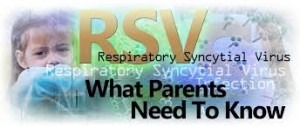 Although not yet widespread, winter virus and flu season in Florida is in full swing.
Although not yet widespread, winter virus and flu season in Florida is in full swing.
While flu cases remain relatively mild here in Sarasota, we are seeing a flux of new cases of Respiratory Syncytial Virus (RSV), which can be particularly dangerous for babies.
Although RSV will appear to be nothing more than a cold in some children, it actually is the leading cause of infant hospitalization, so it’s important for parents to recognize the signs and know when to seek medical care.
First, the basics: A cold and RSV are two different illnesses that share cold-like symptoms – sneezing, coughing and mild fever.
• A cold causes symptoms two to three days after infection, typically lasts a week and usually clears up by itself. Sometimes, however, it can lead to a secondary infection, such as an ear infection.
RSV is a respiratory virus that infects the lungs and breathing passages. Most babies and toddlers will get a bout of RSV before they are age two. In healthy children, RSV usually clears up in one to two weeks. Symptoms include a stuffy, runny nose, coughing, slight fever and wheezing.
In some children, however, these symptoms progress to severe cough with wheezing and difficulty breathing and can cause other respiratory infections, such as bronchiolitis, an inflammation of the small airways in the lung, and pneumonia.
The virus is particularly dangerous to newborns, especially premature babies and those born with heart or lung conditions.
How can you tell if your child’s infection is serious?
Babies who are having trouble breathing may grunt, breathe quickly, or strain so hard you can see their nostrils flare and muscles retract in their ribs or neck. Seek emergency medical attention right away if you see breathing any difficulties.
Another important danger sign is dehydration. Make sure your child stays hydrated by drinking plenty of fluids. A sick child cannot be expected to eat, but must continue to drink to avoid dehydration. Signs of dehydration would be dry diapers after 6-8 hours, pale color, dry mouth, crying that doesn’t produce tears or weakened activity level.
Prevention is the best way to reduce the risk of your child contracting RSV. The virus is very contagious and can be spread easily through touching, sneezing, and coughing. Also, it can live for hours on surfaces such as tissues and countertops.
Here are some ways to reduce the risk of infection:
• Wash hands often with soap and water for at least 15 to 20 seconds, and alcohol-based hand sanitizer for cleaning on-the-go.
• Use tissues for runny noses. They’re more sanitary than handkerchiefs.
• Cover mouth and nose for coughs and sneezes.
• Don’t share cups or utensils with other children.
• Avoid taking children to crowded places like the mall and grocery store during cold, flu and RSV season, especially at peak shopping hours.
To learn more about the virus, visit the CDC website .
